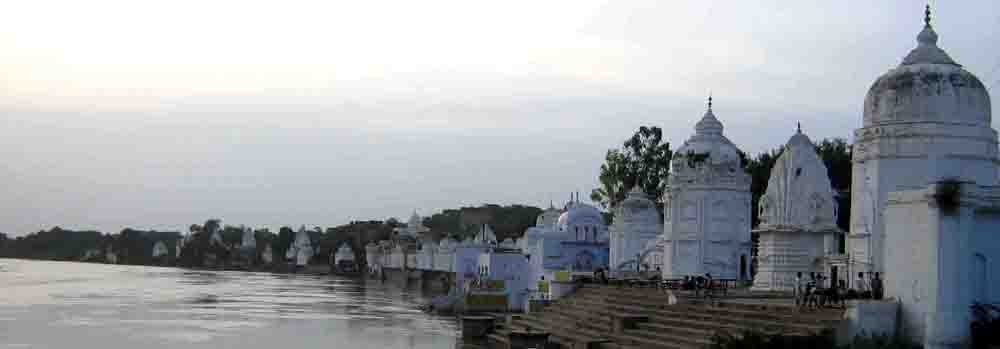|
Bateshwar is a village in the Bah Tahsil of Agra District, situated at a bend of the Yamuna,41 miles south-east of Agra city.
Bateshwar draws its name from the main Bateshwarnath Temple dedicated to Lord Shiva. Local folklore and ancient legends describe a Shiv worshiping ascetic who resided here under a magnificent Banyan tree (Bat in Sanskrit), and raised a shrine to Shiva that came to be known as Bat-Ishwar; the banyan lord. The journey from Bat-Ishwar to the current Bateshwar was but a short one.
The area is referred to as Shauryapura in ancient Jain texts; named after its founder the Yadava king Shursen, great-grandfather of both the Hindu god Krishna and of the 22nd Tirthankar of the Jains - Neminath. The wealth of material unearthed by excavations in the area suggest that Shauryapura or Shouripura was the site of a thriving settlement, beginning as early as 3000BC, the period associated with the great epic of Mahabharata of which Lord Krishna is a central figure. According to Jain tradition the site was abandoned by the Yadava clan for strategic reasons leading to its decline. The river also changed course causing the settlement to move twice, ending at the site of present day Bateshwar. The two older sites were identified as the Aundha Khera or overturned city and the Purana Khera or old city. The area remains sacred ground for the Jain community which continued to refer to the entire settlement as Shouripur. However, with time, the site of the Aundha Khera – the first settlement about 2 miles north of modern day Bateshwar, where Jain Temples had been rebuilt on the foundations of much older ones became better known as Shouripur.
Subsequent archaeological expeditions have thrown up proof of substantial habitation at Bateshwar in the Maurya period (around 300BC) and even more so later during the mighty Kushan Empire (First century AD). Interestingly most of the later buildings of the Rajput-Sultanate and the late medieval period, including the incomplete fort and the many havelis, have been built largely with reused Kushan era bricks.
Bateshwar remained a prominent religious centre and the late medieval period saw a burst of building activity including the renewal of the older shrines through endowments of the local rulers. The 1871-72 Archaeological report by ACL Carlleyle describes the unfinished nature of many of the grander buildings including the late medieval period fort, a testament to the turbulence that plagued the area at the fall of Mughal authority.
|

